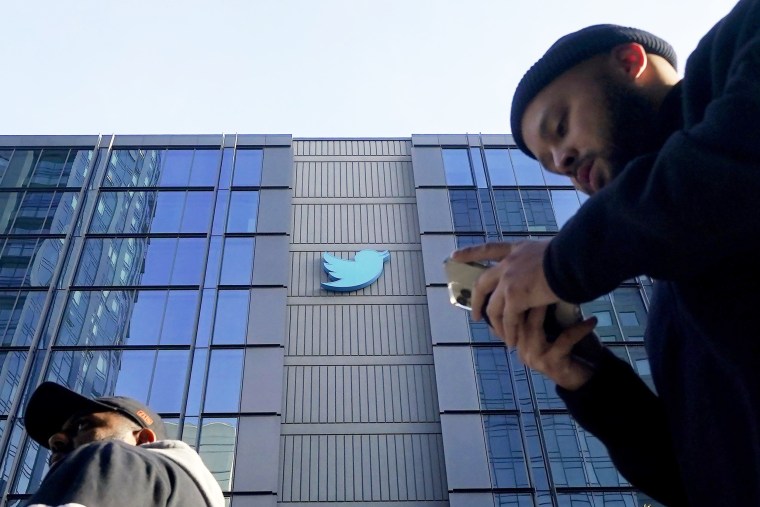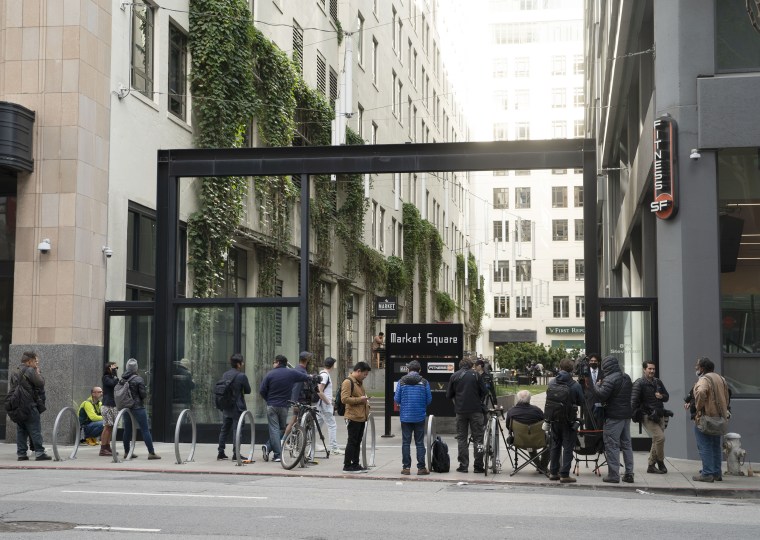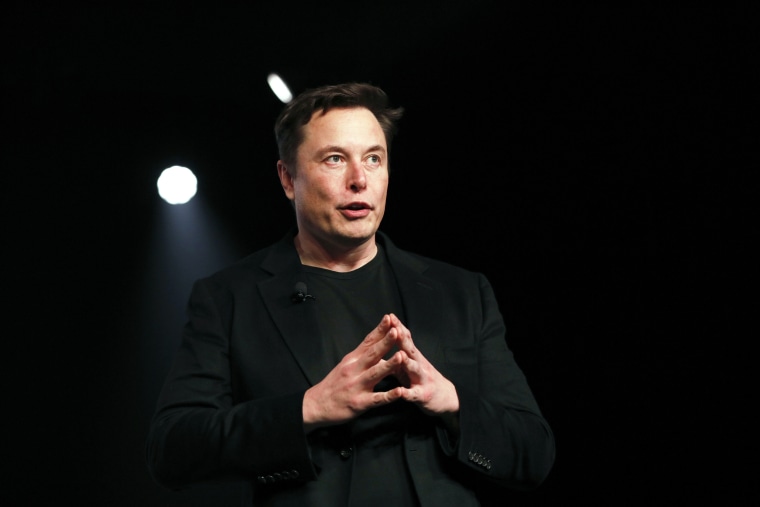A lot has happened since Elon Musk completed his acquisition of Twitter last month — layoffs of thousands of employees, firings of engineers critical of him and an impersonation of an official Eli Lilly account that caused the pharmaceutical company's stock to drop.
It's all part of the chaotic saga that began this spring, when Musk first put in motion a plan to take control of the social media platform.
Here’s a complete timeline of what’s happened so far.
April 2022
On April 5, Musk discloses he has purchased more than 9% of Twitter's shares on the open market. At first, he is offered a board seat. That plan quickly falls through — and Twitter decides to adopt a poison-pill strategy to fend off a hostile takeover from Musk.
Musk subsequently makes an offer to buy Twitter for $54.20 a share, or about $44 billion — a price well above the company's stock price at the time. He says his goal is to apply free speech principles to the platform, which he claimed had been mismanaged. "The company will neither thrive nor serve this societal imperative in its current form," he writes. "Twitter needs to be transformed as a private company."
"Twitter has extraordinary potential. I will unlock it," he adds.
Musk says he would fund the deal through a combination of cash and borrowing. At this point, shares in Musk's automotive company, Tesla, begin to decline; by mid-November, they will have lost close to half their value.
By April 25, Twitter decides to accept Musk's offer.
“The Twitter Board conducted a thoughtful and comprehensive process to assess Elon’s proposal with a deliberate focus on value, certainty, and financing,” Twitter’s Independent Board Chair Bret Taylor says in a statement. “The proposed transaction will deliver a substantial cash premium, and we believe it is the best path forward for Twitter’s stockholders.”

May - June 2022
On May 13, Musk tweets he is putting the deal to acquire Twitter "temporarily on hold" pending additional information about the volume of fake and spam accounts on the platform.
That's despite regular disclosures by Twitter stretching back years featuring its estimates that less than 5% of the accounts on the site were fraudulent. Although Musk subsequently says he is still committed to the deal, he continues to make public statements about problems he saw at Twitter.
In response, Twitter issues a statement saying Musk already agreed to the $54.20 transaction and that it intended to close on and enforce the merger agreement.
Musk continues to accuse Twitter of covering up the volume of bot and spam accounts on the site and failing to respond to requests for information about the issue.
“Mr. Musk has made it clear that he does not believe the company’s lax testing methodologies are adequate so he must conduct his own analysis,” Musk's attorney says in a filing. “The data he has requested is necessary to do so.”
Twitter denies the claims and continues to forge ahead with the deal. On June 16, the company invites Musk to an all-hands meeting, which Musk attended remotely. It augurs the sea change in the company culture that would eventually sweep over the business once Musk finally takes it over.
July - September 2022
Unable to come to an agreement over the bots issue, Twitter sues Musk in Delaware court to enforce the $44 billion deal.
“Musk’s conduct simply confirms that he wants to escape the binding contract he freely signed, and to damage Twitter in the process,” the company says.
Musk ultimately countersues, once again accusing Twitter of fraud — allegations it denies. A trial date is set for Oct. 17 in Delaware.
Seemingly unrelated to the acquisition, a former Twitter employee files a whistleblower complaint alleging lax operational security practices at Twitter; the complaint is revealed in August. He testifies before a Senate committee in September that Twitter was “a decade behind industry security standards.”
“It’s not far-fetched to say that an employee in the company could take over the accounts of all of the senators in this room,” he says.
In the meantime, Musk and Twitter jockey for position ahead of the October trial — with Judge Kathaleen McCormick increasingly siding with Twitter in key pre-trial motions.
October
As the trial approaches and markets increasingly predict a verdict in favor of Twitter, Musk says he will resubmit his bid to acquire the company for $54.20 if Twitter agrees to head off a trial. Twitter declines to do so, but Judge McCormick decides to give the two sides until the end of the month to hammer out an agreement.
As the deal nears, The Washington Post reports Musk intends to lay off massive numbers of employees after the acquisition is complete. Though Twitter's general counsel tells workers not to believe what it called "rumors," those job cuts come swiftly after Musk's takeover and total about half of Twitter's payroll. Musk also writes a note to advertisers pledging Twitter will not become a “free-for-all hellscape.”

November
Musk's arrival is notably hailed by libertarians and right-leaning pundits. Within 48 hours of taking over, Musk tweets, then deletes, an unfounded, anti-LGBTQ conspiracy theory about the Paul Pelosi attack. A week after Musk’s takeover, far-right figures begin to test Twitter’s boundaries for anti-LGBTQ speech.
Despite stating that he had not made substantive changes to Twitter's content moderation policies, advertisers say they will pull back amid "uncertainty" about his new strategy.
On Nov. 4, NBC News reports that employees who helped fight misinformation were ultimately among those laid off.
Musk also launches plans to begin charging users $7.99 for access to Twitter Blue, a service that included the platform's blue-checkmark verification. In the next two days, the site is flooded with users who bought blue checkmarks only to turn around and impersonate official accounts, including Musk's. In one instance, a user pretending to be the pharmaceutical giant Eli Lilly tweets that the company's insulin products would now be free, causing the real company's stock to briefly fall.
As impersonators continue to spread, Musk decides to suspend the rollout of the new Twitter Blue program. Meanwhile, Twitter engineers become increasingly vocal about the changes being made by Musk. In response, Musk fires one engineer, then terminates as many as 20 others, including ones who'd criticized him on internal channels.
On Nov. 16, Musk sends a companywide email to remaining employees demanding they commit to working “long hours at high intensity” or receive “three months of severance,” if they did not consent to these conditions or support his vision for “Twitter 2.0.”

